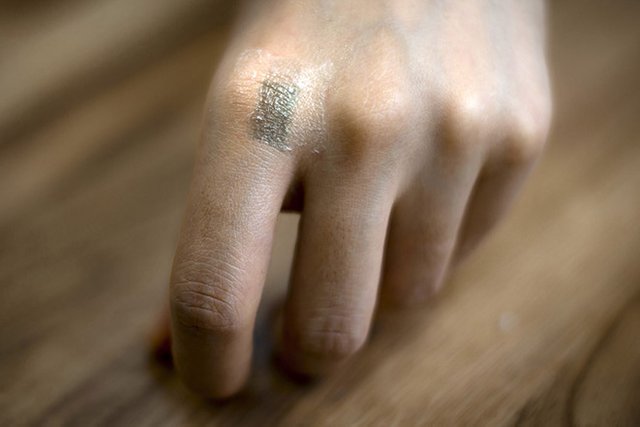Stretchable Transistors are Here, and Cheap to Make for Wearable Electronic Applications
There is a new transistor that has been developed which can stretch twice its length without losing conductivity.

source
It seems 2017 is starting off with a bang for technology. Just yesterday I did a post on the development of photonic transistors.
This new stretching transistor can be incorporated into medical sensor technology that attach to our bodies and give updates about our health. There could even be medical tattoos with a stretchable mini device that automatically gets applied to monitor a patient's health. The prospects for this technology doesn't end there, because the field of wearable electronics will be able to take advantage of this stretchable transistor and create much better wearable technology.
The challenge of wearable electronics is the fabrication of stretchable devices themselves. When the human body moves, these devices need to deform accordingly. There is a competition between mechanical and electronic properties.
A revolutionary method of conductive polymer nano confinement allows for the fabrication of flexible electronics which retain high charge carrier conductivity, up to twice its original length.
Zhenan Bao at Stanford University was in charge of this new research which came up with the stretchy transistor by confining conductors inside thin flexible polymer material.
Two decades of research has gone into revealing how nanoconfinement can enhance molecular dynamics while suppressing the crystallization which reduces ductility.
The new fabric is fully stretchable by confining standard conductive polymers into nanofibers.
The molecules aren't perfectly organized as they normally are in crystallization, but they still have conductivity and retain ductility.

source
These nanofibers are embedded in a soft-matrix composed of elastomer that inhibit crack propagation when stretched. Even after 100 stretches the transistor showed no signs of cracking and the connectivity was only reduced slightly.
The effectiveness of the technology was demonstrated by turning a small LED on off through with a transistor bent around a knuckle.
This fundamental research on confinement effects of polymer can be applied to other applications which can exploit the nanoconfinement affect. This process could be used to create systems that mimic active membrane motion and other cell activities.
Other attempts have been made at creating a stretchable transistor that can withstand the 70% ductility of human skin. This team has managed to do so in a cheap and easily replicable way, enabling forward progress for all other wearable technology researchers and developers.
All of these advantages come at the cost of some electrical performance, but it will be good enough to be applied to many kinds of applications.
The biotechnology and nanotechnology ideas are something I remember from sci-fi shows like The Outer Limits, but now it's becoming more real by the day. Nanotechnology is going to be huge in the future, as I see it. And wearable technology is going to become a progressively more realizable reality. The next few decades are going to be something to experience! Invest in the future tech if you can ;)
References:
If you appreciate and value the content, please consider:
@krnel
2017-01-07, 5pm

You always post fresh interesting stuff... thanks buddy @krnel
Thanks for the feedback and support :)
Hi @krnel
Very interesting technology and article, thank you for sharing.
I swear their importing this stuff from #antarctica (Woo-Woo) Theater of operations.
Crypto Exchange In Australia?
This is a good article on the best crypto exchange Australia!?